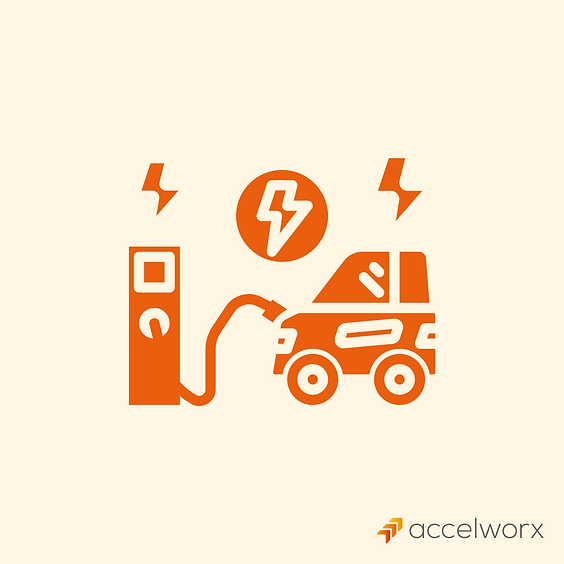Introduction
With the rapid rise in electric vehicle (EV) adoption, the need for robust EV charging infrastructure has become increasingly apparent. As more drivers make the switch to electric vehicles, ensuring convenient and efficient access to charging stations is paramount to supporting this transition. However, the mere presence of charging stations is not enough; their design must be carefully crafted to meet the diverse needs of users while aligning with broader sustainability goals.
User-Centric Design
Understanding the behaviors and preferences of EV drivers is essential in designing charging stations that truly meet their needs. By conducting thorough user research, stakeholders can gain valuable insights into the expectations and pain points of drivers. From there, designers can implement strategies to create intuitive and user-friendly charging experiences. This may involve considerations such as intuitive signage, easy-to-use interfaces, and convenient amenities to enhance the overall user experience.
Site Analysis and Urban Planning
The deployment of EV charging infrastructure is intricately tied to urban planning and site selection. Urban planners play a crucial role in identifying suitable locations for charging stations based on factors such as population density, traffic patterns, and existing transportation infrastructure. Moreover, considerations for site selection must also include zoning regulations and community engagement to ensure that charging stations are seamlessly integrated into their surroundings and serve the needs of local residents effectively.
 Integration of Renewable Energy
Integration of Renewable Energy
One of the most compelling aspects of modern EV charging station design is the integration of renewable energy sources. By harnessing solar, wind, or other renewable sources, charging stations can reduce their reliance on the grid and minimize their environmental footprint. Case studies abound showcasing successful implementations of solar-powered charging stations, demonstrating the feasibility and benefits of this approach. Not only does renewable energy integration align with sustainability goals, but it also helps to future-proof charging infrastructure against potential energy shortages or grid disruptions.
Smart Technologies for Efficiency
The advent of smart technologies has revolutionized the efficiency and functionality of EV charging stations. From advanced data analytics to predictive maintenance algorithms, these technologies enable operators to optimize charging station performance and minimize downtime. By leveraging real-time data on usage patterns and energy consumption, operators can make informed decisions to improve service reliability and user satisfaction. Additionally, features such as remote monitoring and automated billing enhance the convenience and accessibility of charging stations for users.
Inclusive and Accessible Design
Inclusivity should be a guiding principle in the design of EV charging stations, ensuring that they are accessible to users of all abilities. This involves incorporating universal design principles to accommodate individuals with mobility challenges or disabilities. From wheelchair-accessible parking spaces to tactile signage and audio cues, there are various strategies for creating an inclusive environment that caters to the diverse needs of users. By prioritizing accessibility, charging station operators can foster a more inclusive and equitable transportation ecosystem.
In conclusion, mastering the design of EV charging stations requires a comprehensive approach that considers the needs of users, the surrounding urban environment, sustainability objectives, and technological advancements. By embracing user-centric design principles, integrating renewable energy sources, leveraging smart technologies, and prioritizing inclusivity, stakeholders can create charging stations that not only meet but exceed the expectations of EV drivers while contributing to a more sustainable future.
Environmental Sustainability
As the world continues to grapple with the challenges of climate change and environmental degradation, the role of EV charging infrastructure in promoting sustainability has come under scrutiny. While electric vehicles themselves offer a cleaner alternative to traditional internal combustion engine vehicles, it is essential to consider the environmental impact of the infrastructure supporting their widespread adoption. In this section, we examine the various facets of environmental sustainability in EV charging station design and operation.
Examining Environmental Impact
The deployment and operation of EV charging infrastructure can have both positive and negative environmental implications. On one hand, electric vehicles produce zero tailpipe emissions, reducing air pollution and greenhouse gas emissions. However, the sourcing of electricity to power charging stations can still contribute to environmental degradation if derived from fossil fuels. It is therefore crucial to assess the lifecycle environmental impact of charging infrastructure, considering factors such as energy consumption, emissions, and resource usage.
Discussion on Sustainable Practices
To mitigate the environmental impact of EV charging infrastructure, stakeholders must prioritize sustainable practices throughout the design, construction, and operation phases. This includes the use of sustainable materials in the construction of charging stations, such as recycled steel, concrete, and eco-friendly building materials. Additionally, incorporating green building practices, such as energy-efficient lighting, passive heating and cooling, and water-saving features, can further reduce the carbon footprint of charging stations. Moreover, implementing measures to reduce energy consumption, such as efficient charging protocols and idle management systems, can minimize operational emissions and energy costs.
Partnerships and Collaborations
Collaboration between government agencies, industry stakeholders, and community organizations is essential in expanding EV charging networks and promoting adoption. By forging strategic partnerships, stakeholders can leverage resources, expertise, and funding to accelerate the deployment of charging infrastructure. Examples of successful collaborations abound, ranging from public-private partnerships for funding and site selection to community-driven initiatives for advocacy and outreach. These partnerships play a vital role in overcoming barriers to EV adoption, such as range anxiety and infrastructure gaps, while fostering a supportive ecosystem for sustainable transportation.
Regulatory and Policy Considerations
Regulatory frameworks and policy initiatives play a significant role in shaping the development and deployment of EV charging infrastructure. Incentives, mandates, and regulations at the local, regional, and national levels can incentivize investment in charging infrastructure, promote interoperability and standardization, and accelerate the transition to electric mobility. Examples include tax incentives for EV charging equipment installation, mandates for EV-ready building codes, and regulations requiring public charging infrastructure at key locations. By aligning policies with sustainability goals and market dynamics, policymakers can create an enabling environment for the growth of EV charging infrastructure.
Future Outlook and Innovation
Looking ahead, the future of EV charging design is ripe with innovation and technological advancements. Emerging trends such as advancements in battery technology, wireless charging, and autonomous vehicles are poised to revolutionize the way we charge and interact with electric vehicles. Breakthroughs in fast-charging technology promise to reduce charging times significantly, while wireless charging infrastructure embedded in roads and parking spaces could offer seamless and convenient charging experiences. Moreover, the integration of autonomous driving capabilities with charging infrastructure opens up new possibilities for automated charging and vehicle-to-grid interactions, further enhancing the efficiency and sustainability of electric mobility.
Conclusion
In conclusion, Accelworx is committed to leading the way in mastering EV charging station design through a steadfast dedication to sustainability, accessibility, and innovation. By prioritizing these core principles, we strive to create charging infrastructure that not only meets the needs of today’s electric vehicle drivers but also paves the way for a greener and more sustainable future. With a focus on collaboration and continuous improvement, Accelworx is poised to drive positive change in the transportation industry and beyond.

